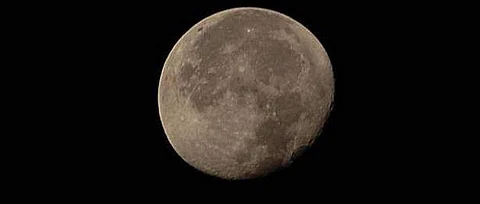

Earth's Moon and Mercury, the closest planet to the Sun, may have far more water ice than previously thought, new evidence suggests.
"If confirmed, this potential reservoir of frozen water on the Moon may be sufficiently massive to sustain long-term lunar exploration," said Noah Petro, Lunar Reconnaissance Orbiter Project Scientist at NASA's Goddard Space Flight Center in Greenbelt, Maryland.
The potential ice deposits are found in craters near the poles of both Moon and Mercury, said the study published in the journal Nature Geoscience.
"We found shallow craters tend to be located in areas where surface ice was previously detected near the south pole of the Moon, and inferred this shallowing is most likely due to the presence of buried thick ice deposits," said lead author Lior Rubanenko of the University of California, Los Angeles.
In the past, telescopic observations and orbiting spacecraft have found glacier-like ice deposits on Mercury, but as of yet not on the Moon. The new work raises the possibility that thick ice-rich deposits also exist on the Moon. The research may not only help resolve the question regarding the Moon's apparent low ice abundance relative to Mercury, but it could also have practical applications.
The poles of Mercury and the Moon are among the coldest places in our solar system. Unlike Earth, the spin axes of Mercury and the Moon are oriented such that, in their polar regions, the Sun never rises high above the horizon.
Consequently, polar topographic depressions, such as impact craters, never see the Sun. For decades it has been postulated these so-called permanently shadowed regions are so cold that any ice trapped within them can potentially survive for billions of years.
Previous observations of the poles of Mercury with Earth-based radar revealed a signature characteristic of thick, pure ice deposits. Later, NASA's MESSENGER - the Mercury Surface, Space Environment, Geochemistry and Ranging spacecraft - imaged these ice deposits.
Previous radar and imaging studies of the Moon, whose polar thermal environments are very similar to those of Mercury, found only patchy, shallow ice deposits.
The study used elevation data obtained by MESSENGER and NASA's Lunar Reconnaissance Orbiter (LRO) to measure approximately 15,000 simple craters with diameters ranging from 2.5 km to 15 km on Mercury and the Moon.
Indian Space Research Organisation (ISRO) on July 22 launched the Chandrayaan-2 Moon mission in order to explore the topography of the Moon and its composition and will search for water besides conducting in-situ studies.
The Chandrayaan-1 mission found evidence of water on the Moon.
